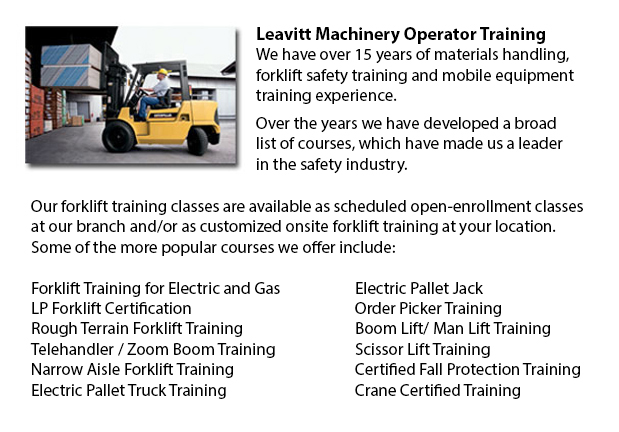
There are actually two different categories of lift trucks within the materials handling market, the industrial model and the rough terrain model. Rough terrain lift trucks first came on the marketplace in the 1940's and were predominantly used on irregular surfaces, best for areas where no paved roads were accessible, like building sites and lumberyards.
Rough terrain lift trucks normally employ an internal combustion engine with a battery for power. The engines can function on propane, diesel or gasoline. A number of suppliers are experimenting with rough land forklifts that consume vegetable matter and run from ethanol. Large pneumatic tires with deep treads typify these vehicles to allow them to grasp onto the roughest soil type devoid of any slippage or sliding.
The most primitive models of all terrain forklifts were able to transport weights of up to 1000 lbs, using blades that could slide beneath the item, lift it a tiny bit and then transport it to another location. After a decade on the market, rough terrain lift trucks had been given additional hauling strength to about 2000 lbs capacity. In the 1960's telescoping booms were added, allowing them to stack supplies much higher than in previous years. The telescoping model characteristic is a staple of most all terrain lift trucks these days. Present models are capable of managing well over 4000 lbs thanks to the continued enhancements over time. Telescoping ability has also improved with some styles reaching a height of 35 feet. Operator safety has also become a focus with some all terrain lift trucks now built are outfitted with an enclosed cab for the driver, versus the older open air seating capacity.
The rough terrain lift trucks offered these days work just as well on covered floors as on unpaved roads. These rough terrain lift trucks are being marketed for their versatility enabling establishments to transfer parts from outside the plant to the inside or vice versa.
-
Toyota Forklift
Ever since 1992, Toyota Material Handling inc., U.S.A., also referred to as TMHU, have been the top selling lift truck provider in the United States. This company has been based out of Irvine, California for well over 40 years, providing a comprehens... More -
Nissan Forklift
Nissan Motor Co. Ltd prides itself on achieving total consumer fulfillment when enjoying one of their car, truck or forklift products. They are fully committed to delivering high value and meticulous quality values to their customers. Incorporating a... More -
Terex Forklift
Terex Forklifts takes great pleasure in producing quality equipment that helps improve their customers' efficiency while standing by their mission to provide a cost effective yet consistent product line. Through several divestures and acquisitions de... More -
Genie Forklift
Genie is a globally established corporation that enjoys the spirit of partnership with their extensive network of allied consumers. Genie Industries prides itself on the image of bringing materials and people higher and extending beyond the products... More -
Doosan Forklift
Doosan Infracore Company Ltd. is an international company consisting of Diesel Engines, Defense Industry goods, Industrial Vehicles, Construction Technologies and Machine Instruments and Mechanization Systems. Their United States partner, Doosan... More

Forklift Training Edmonton
crossorigin="anonymous">
TOLL FREE: 1-888-254-6157
Edmonton, Alberta
forklifttrainingedmonton.com
Email Us
About Us


